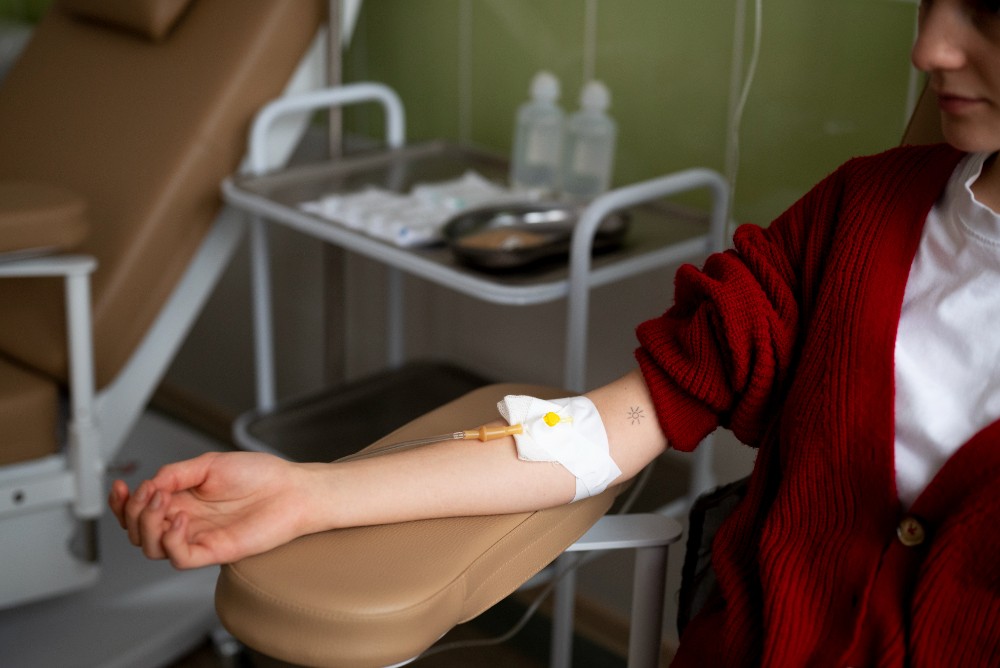Zat besi sangat penting bagi pertumbuhan dan perkembangan bayi dan balita. Zat besi berperan dalam produksi hemoglobin, yaitu protein dalam sel darah merah yang berfungsi membawa oksigen ke seluruh tubuh.
Kekurangan zat besi pada bayi dan balita dapat menyebabkan berbagai masalah kesehatan, termasuk anemia defisiensi besi. Anemia defisiensi besi pada bayi dan balita dapat menyebabkan gangguan perkembangan otak dan kognitif, masalah perilaku dan emosional, penurunan sistem kekebalan tubuh, gangguan makan, hingga masalah dengan jantung.
Tanda Bayi dan Balita Kekurangan Zat Besi
Kekurangan zat besi pada bayi dan balita dapat diamati dengan beberapa tanda berikut ini:
Kulit pucat
Salah satu tanda utama kekurangan zat besi pada bayi dan balita adalah kulit yang tampak lebih pucat dari biasanya. Kulit yang pucat terutama di sekitar wajah, telapak tangan, atau di bawah mata menandakan rendahnya produksi hemoglobin.
Pada bayi yang berkulit cerah, pucat lebih mudah terlihat. Tanda ini juga muncul di bibir, gusi, dan bagian dalam kelopak mata.
Mudah lelah atau terlihat lesu
Bayi dan balita yang kekurangan zat besi cenderung cepat lelah dan tampak lesu. Hal ini terjadi karena kurangnya oksigen yang didistribusikan ke seluruh tubuh. Jika anak terlihat kurang aktif atau cepat merasa lelah saat melakukan aktivitas ringan, penting untuk waspada terhadap kemungkinan kekurangan zat besi.
Baca Juga: Mengapa Bayi ASI Perlu Mendapatkan Suplementasi Zat Besi?
Perkembangan kognitif yang terganggu
Zat besi memiliki peran krusial dalam perkembangan otak anak. Bayi dan balita yang kekurangan zat besi dapat mengalami keterlambatan dalam perkembangan motorik serta kesulitan berkonsentrasi. Selain itu, mereka juga mungkin mengalami gangguan fungsi kognitif, seperti masalah dalam mengingat dan belajar.
Nafsu makan menurun
Bayi atau balita yang kekurangan zat besi mungkin menolak makanan yang biasanya mereka sukai, atau makan dalam jumlah sangat sedikit. Penurunan nafsu makan ini dapat memperburuk masalah kekurangan nutrisi yang berpotensi menyebabkan penurunan berat badan atau melambatnya pertumbuhan.
Rentan mengalami infeksi
Zat besi juga berperan penting dalam sistem kekebalan tubuh. Kekurangan zat besi pada bayi dan balita menyebabkan mereka cenderung lebih sering sakit karena daya tahan tubuh yang melemah. Anak juga lebih rentan terhadap infeksi saluran pernapasan, infeksi kulit, atau masalah pencernaan.
Baca Juga: Tanda-Tanda Ibu Hamil Kekurangan Zat Besi
Tangan dan kaki dingin
Anak-anak yang kekurangan zat besi mungkin mengalami gejala sirkulasi yang buruk, seperti tangan dan kaki yang terasa dingin. Hal ini disebabkan oleh kurangnya oksigen dalam darah, yang mengakibatkan aliran darah tidak optimal ke bagian-bagian tubuh tersebut.
Apabila Anda mencurigai adanya tanda-tanda di atas, sangat penting untuk segera berkonsultasi dengan dokter. Dokter mungkin akan merekomendasikan pemeriksaan darah untuk memastikan kadar zat besi dan hemoglobin pada tubuh anak.
Dokter juga mungkin merekomendasikan pemberian suplemen zat besi serta penyesuaian pola makan. Memiliki pertanyaan lain terkait dengan kekurangan zat besi? Anda bisa berkonsultasi dengan dokter melalui aplikasi Ai Care yang dapat diunduh di App Store atau Play Store.
Mau tahu informasi seputar kehamilan, menyusui, kesehatan wanita dan anak-anak? Cek di sini, ya!
- dr Nadia Opmalina
Medline Plus (2024). Anemia caused by low iron - infants and toddlers. Available from: https://medlineplus.gov/ency/article/007618.htm
Mayo Clinic (2022). Iron deficiency anemia. Available from: https://www.mayoclinic.org/diseases-conditions/iron-deficiency-anemia/symptoms-causes/syc-20355034
Cedars Sinai. Iron-Deficiency Anemia in Children. Available from: https://www.cedars-sinai.org/health-library/diseases-and-conditions---pediatrics/i/iron-deficiency-anemia-in-children.html
Dana Dubinsky. Iron-deficiency anemia in babies. Available from: https://www.babycenter.com/health/illness-and-infection/iron-deficiency-anemia-in-babies_10860
Nation Wide Children's (2022). Iron-Deficiency Anemia in Children. Available from: https://www.nationwidechildrens.org/conditions/health-library/iron-deficiency-anemia-in-children












